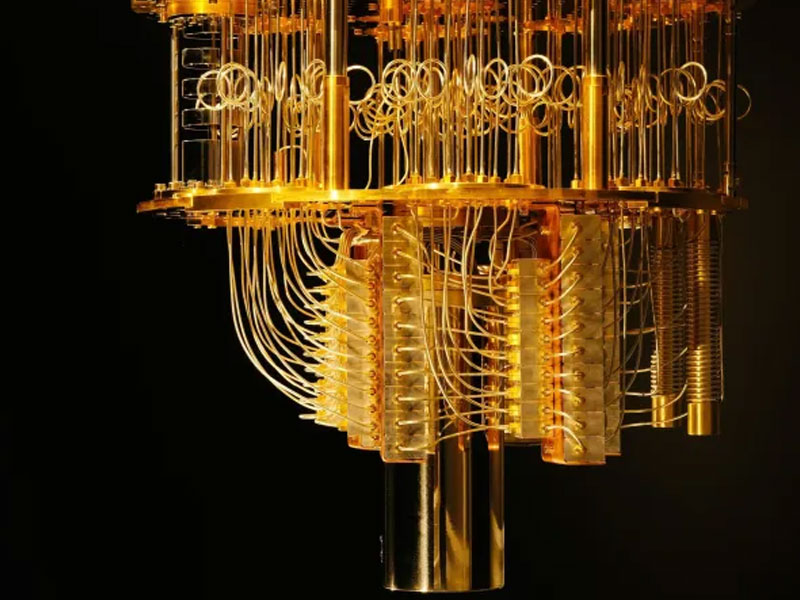How Asia Pacific is Leading the Way in Quantum Cryptography Advancements
SOURCE: HTTPS://CITYLIFE.CAPETOWN/
NOV 06, 2023
Key step towards the realisation of quantum computing made at Durham University
SOURCE: PALATINATE.ORG.UK
NOV 03, 2021

“I speak of none but the computer that is to come after me” – Deep Thought (Douglas Adams, The Hitchhiker’s Guide to the Galaxy).
Quantum computers, qubits, and ultracold molecules might sound like meaningless buzzwords, but far from being a plot point in some cheesy sci-fi film, they’re based on real science and much closer than you might think. Recently, Durham researchers have pushed us nearer to realising practical quantum computers by demonstrating coherence times in ultracold molecules of over five seconds.
In a quantum computer, qubits – which can be atoms, photons, or in this case, molecules – are used to perform some types of calculation much faster than a regular computer is able to. This is the ‘quantum advantage’, and often it can be massive. In 2019, Google used a quantum computer to do something which would take a classical supercomputer 10,000 years in just 200 seconds!
Qubits, shorthand for quantum bits, exist in a superposition of the states 0 and 1, unlike classical bits, which are always either one or the other at any given time. This can be difficult to visualise; a good way to think of it is like a coin, where heads is 0, and tails is 1. A classical computer has the coins laid out on the table, facing one way or the other. For qubits, it’s more like the coins are spinning through the air; neither 1 nor 0, and yet both at the same time. This is described as a superposition of both states.
These superpositions must be coherent for calculations to be possible. Imagine a tape recording; initially, the video is clear and easy to understand. As the tape ages, the video quality degrades and information is lost, and eventually, it’s impossible to discern the original content at all. By demonstrating an increased coherence time, researchers have given themselves longer to run calculations and take measurements using the system.

Molecules have many different energy levels, which are all linked to most of the others in the system. Researchers aim to isolate two of the levels from the rest so that these can be easily interacted with and used as the 0 and 1 states in a qubit.
In order to use molecules as qubits in a quantum computer, it is necessary to first cool them to microkelvin temperatures, which is colder than outer space! Cooling is often achieved using lasers, and is necessary to allow the molecules to be held in traps without them escaping.
These traps typically use magnetic fields and laser light, which can both cause decoherence in the molecules. Researchers working under Durham’s Professor Simon Cornish have spent years studying polar rubidium-caesium molecules, learning about their different states, which has allowed them to design ideal traps that eliminate the most significant causes of decoherence.
This research by Phil Gregory et al. has far-reaching applications beyond quantum computing. Atomic clocks, which use atoms or molecules to measure time with incredible precision, and experimental testing of fundamental physics will both benefit, to name a few.
LATEST NEWS
WHAT'S TRENDING


Data Science
5 Imaginative Data Science Projects That Can Make Your Portfolio Stand Out
OCT 05, 2022

SOURCE: HTTPS://CITYLIFE.CAPETOWN/
NOV 06, 2023
SOURCE: HTTPS://WWW.SCIENCEDAILY.COM/
OCT 27, 2023
SOURCE: HTTPS://WWW.SCIENCEDAILY.COM/
OCT 26, 2023
SOURCE: HTTPS://THEQUANTUMINSIDER.COM/
SEP 28, 2023
SOURCE: HTTPS://TECHMONITOR.AI/
OCT 03, 2023
SOURCE: HTTPS://SCITECHDAILY.COM/
AUG 29, 2023
SOURCE: HTTPS://WWW.DIGITALJOURNAL.COM/
AUG 26, 2023
SOURCE: HTTPS://WWW.TECHTIMES.COM/
AUG 16, 2023